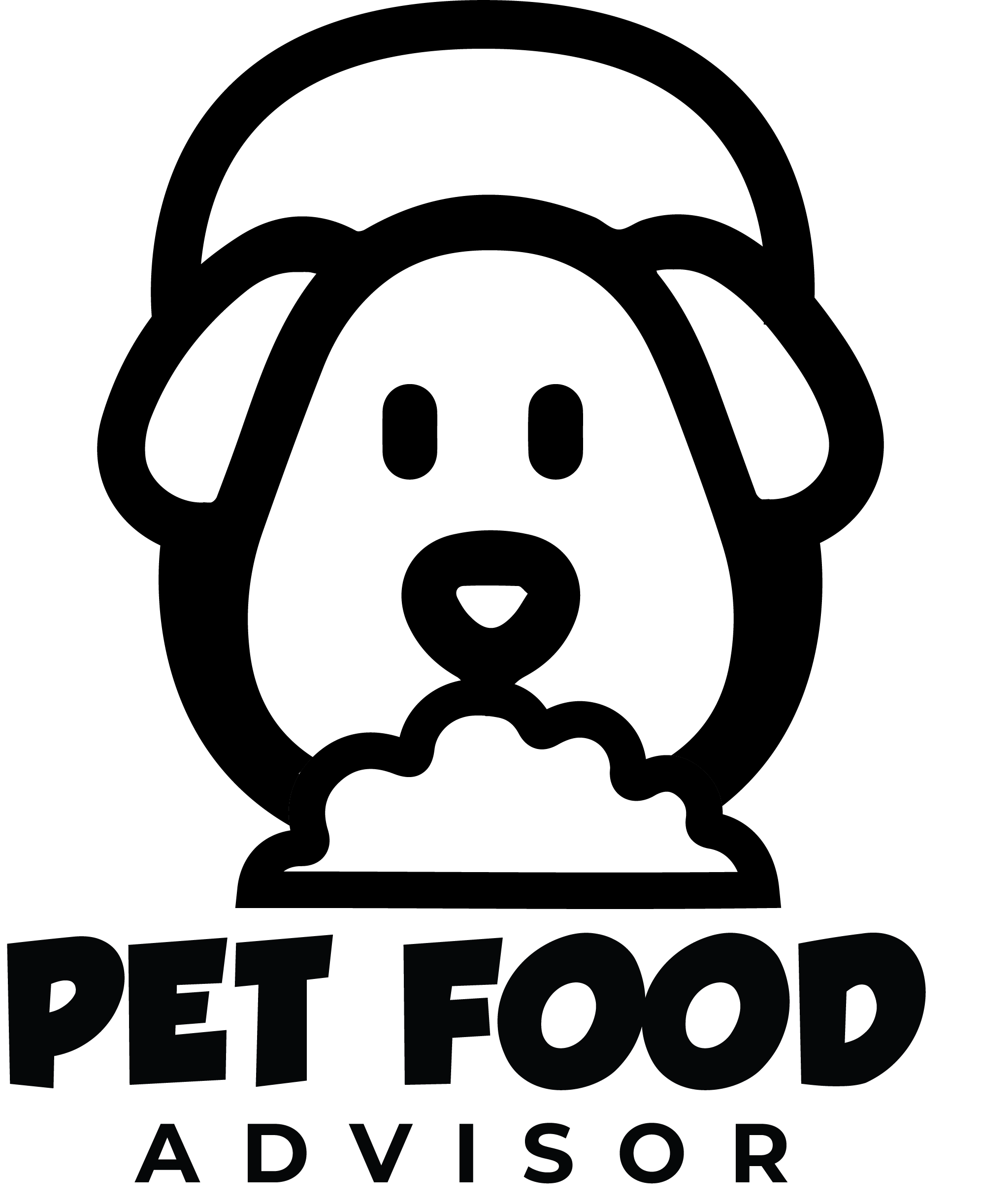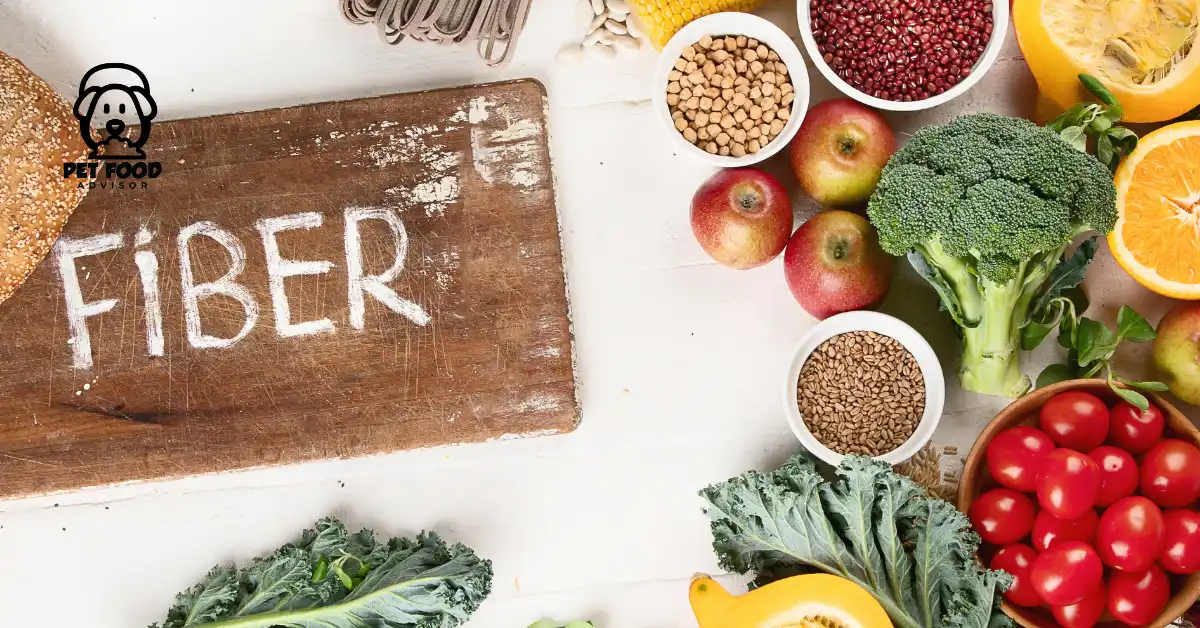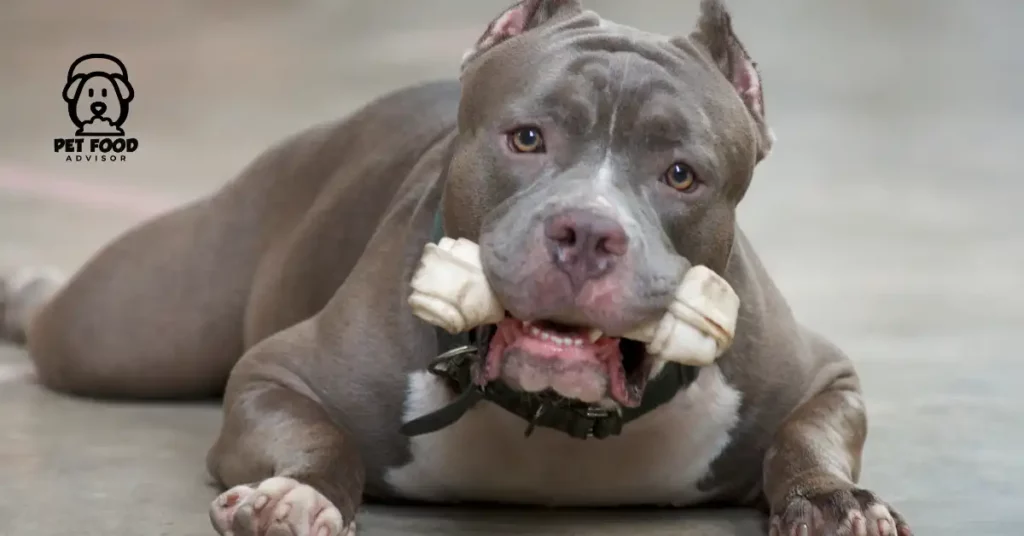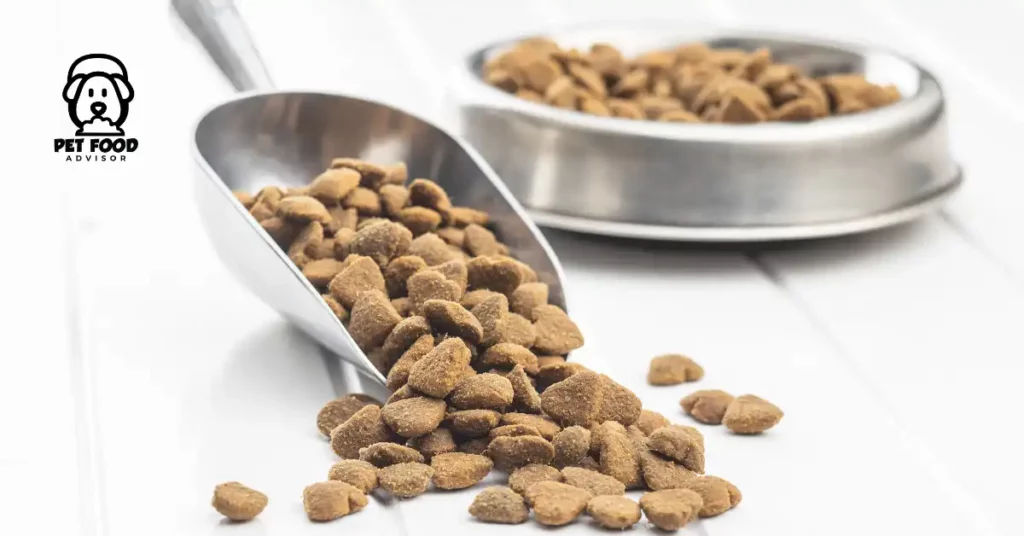How can you Add Well Fibred Food To Your Dog’s Diet?
Fiber is a vital component in the dog’s diet. When you add fiber to dog’s diet it provides many benefits to their health. Fiber plays a crucial role in maintaining a healthy digestive system for dogs. Fiber acts as a natural regulator, keeping the digestive system functioning smoothly.
Fiber can aid in weight measurement for dogs. If your dog takes high-fiber foods regularly are usually in fewer calories. It helps dogs to feel full without consuming extra calories. Fiber has a positive impact on blood sugar regulation in dogs. It slows down glucose absorption, preventing spikes in blood sugar levels. This is particularly important for dogs with diabetes or those at risk of developing the condition.
Dogs do require fiber in their diet for perfect health. Including fiber-rich foods or adding fiber supplements, under veterinary guidance, can help ensure your dog’s dietary fiber needs are met.
Types and Benefits of Fiber for Dogs
There are two main types of fiber which are soluble and insoluble. Insoluble fiber helps control food movement through the digestive system, ensuring it moves at an appropriate pace. Soluble fiber, on the other hand, aids in blood sugar regulation and supports long-term healthy digestion by working alongside gut bacteria.
When it comes to monitoring your own fiber intake, it’s relatively simple. Look for “dietary fiber” on food packaging to find the number of grams per serving.
These labels don’t specify the specific type or types of fiber present in the product. Dog food labels offer even less information, typically listing only “crude fiber” (mostly insoluble fiber). Moreover, the “Guaranteed Analysis” found on pet food packaging indicates the maximum amount of fiber a product could contain rather than the exact amount.
The Right Amount of Fiber for Dogs
You need to balance how much fiber you give to the dogs. The specific fiber requirements for dogs can vary depending on age, breed, size, activity level, and overall health. Some dogs may have particular diet needs or medical conditions requiring fiber consumption adjustments.
A moderate amount of dietary fiber is beneficial for most dogs. If you want to give more fiber to the dog, then it is essential to provide it gradually. A sudden increase in the addition of fiber can cause digestive problems in dogs.
Top 10 Fiber Sources for Dogs
Beet Pulp
Beet pulp is a natural, highly digestible source of fiber derived from sugar beets. It helps regulate bowel movements and supports digestive health in dogs.
Pumpkin
Pumpkin is a typical fiber-rich food for dogs. It is low in calories and high in fiber, and it promotes healthy digestion in dogs. But using plain, canned pumpkin, not pumpkin pie filling, is essential.
Ground Flaxseed
Ground flaxseed is the best source of fiber. It can aid in regulating bowel movements and promoting a healthy gut in dogs. It is the best source of fiber for your dogs for their better health. Remember to use ground flaxseed to allow for better nutrient absorption.
Kelp
Kelp is a seaweed offering dietary fiber, essential vitamins, and minerals. It can be a beneficial addition to your dog’s diet to support their overall health.
Carrots
Carrots are crunchy and tasty and provide a good amount of dietary fiber for dogs. It is used to add fiber to a dog’s diet. They are low in calories and rich in vitamins, making them a nutritious option.
Apples
Apples are a fiber-rich fruit that dogs can enjoy. Ensure you remove the seeds and core, as they can be harmful. Remember to offer apples in moderation due to their natural sugar content.
Strawberries and Blueberries
Strawberries and blueberries are fiber-rich fruits that can be given to dogs as treats in moderation. They are packed with antioxidants and vitamins, making them a healthy option.
Green Beans
Green beans are a low-calorie and fiber-packed vegetable that can be included in your dog’s diet. They can help regulate digestion and provide a healthy snack option.
Brown Rice
Brown rice is a whole grain that contains more fiber than white rice. It can be a beneficial to add fiber to a dog’s diet and essential nutrients.
Lettuce
Lettuce, like romaine or green leaf lettuce, contains fiber and can be a healthy addition to your dog’s diet. However, avoid using lettuce varieties like iceberg, as they have lower nutritional value.
The Advantages of Fiber in a Dog’s Diet
Promoting Healthy Digestion
Fiber plays a crucial role in supporting healthy digestion for dogs. Using food that has fiber in it is the best diet for your dogs. By adding fiber to dog’s diet it bulk to their stools, assisting in regular bowel movements and preventing issues like constipation or diarrhea. By promoting proper digestion, fiber contributes to overall gastrointestinal health in dogs.
Maintaining a Healthy Weight
Including fiber in a dog’s diet can aid in weight management. High-fiber foods are less calorie-dense, helping dogs feel fuller without consuming excessive calories. This can be beneficial for weight loss in overweight dogs or preventing weight gain in dogs at a healthy weight.
Regulating Blood Sugar
Fiber has a positive impact on blood sugar regulation in dogs. It slows down glucose absorption from food, preventing spikes in blood sugar levels. This can be especially important for dogs with diabetes or those at risk of developing the condition, helping to maintain stable blood sugar levels.
Incorporating Fiber into Your Dog’s Diet
Checking your dog’s current food
Measure the fiber content of your dog’s food by checking the ingredients list or consulting the packaging. High-quality dog foods often contain an appropriate amount of fiber. You may only need to add a little if the food already provides sufficient fiber.
Observing your dog
Pay attention to your dog’s bowel movements and digestion. You have to take care of your dog’s condition. Watch t clearly, and regularly. If your dog shows any abnormal behavior, you have to check it with the vet. Signs of constipation, diarrhea, or irregularity may indicate a need for additional fiber. If your dog experiences frequent digestive issues, it could be a sign that they require more fiber.
Consulting with a veterinarian
To correctly assess your dog’s fiber needs, it’s best to consult with a veterinarian. They can evaluate your dog’s overall health, analyze their current diet, and provide guidance on the proper amount and sources of fiber.
Signs of an Imbalanced Fiber Intake
When it comes to your dog’s fiber intake, it’s essential to maintain a balance. Both a deficiency and excess fiber can cause health issues.
Diarrhea
If your dog is experiencing loose or watery stools, it could indicate a fiber imbalance. Insufficient fiber can lead to constipation, while excessive fiber intake can result in diarrhea. Finding the right balance is crucial for your dog’s digestive health.
Increased Stool Frequency
An imbalance in fiber intake can cause an increase in stool frequency. Your dog may exhibit a more urgent need to defecate or have accidents in the house. Pay attention to changes in your dog’s bowel habits and seek veterinary advice if these symptoms persist.
Conclusion
Adding fiber to dog’s diet is a valuable strategy for promoting digestive wellness. It aids regular bowel movements, prevents constipation, and supports a healthy gut. You can enhance your dog’s overall well-being by incorporating fiber-rich foods such as fruits, vegetables, and whole grains. However, it’s crucial to introduce fiber gradually and monitor your dog’s response. Consultation with a veterinarian can provide personalized guidance for your dog’s dietary needs. Remember, a balanced diet and proper hydration are vital to maintaining optimal digestive health for your beloved dog.





